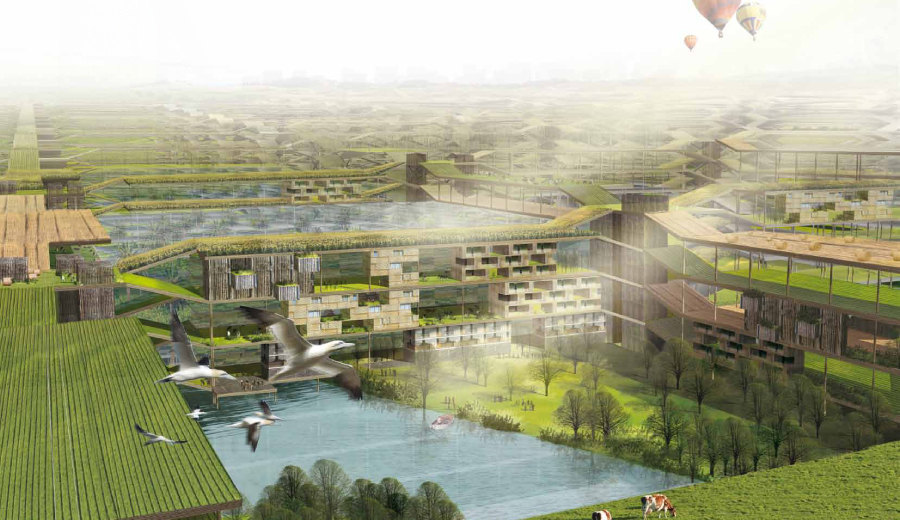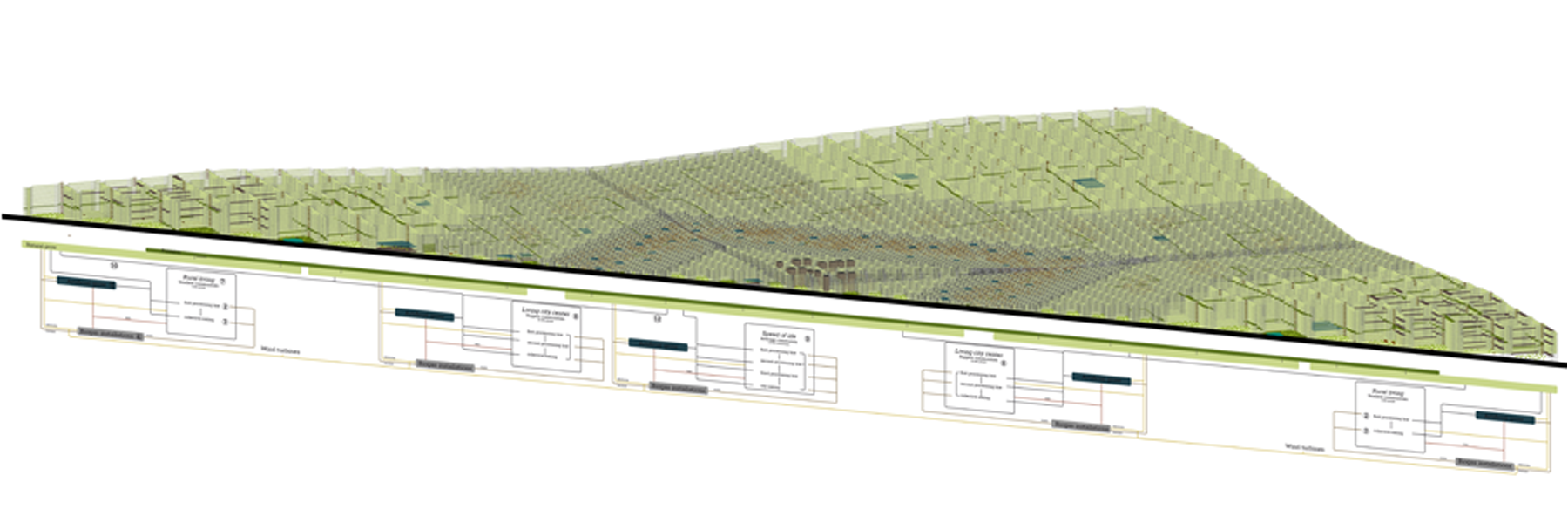What would a city with one million inhabitants look like if all the food consumed was produced in the city itself and if that food was grown organically? The "biological food city" envisions how city inhabitants live amid the land required for the production of fruits, vegetables, grains, and other plant-based foods, the huge land area required for the organic production of meat, dairy and eggs, and natural lands (forestry) which provides agricultural surfaces with important nutrients.


Team: Natalia Kozyra, Wenhua Wang, Yi Tang, and Lara Tomholt
Instructors: Ulf Hackauf, Jeronimo Mejia, Winy Maas (The Why Factory, part of MVRDV)
